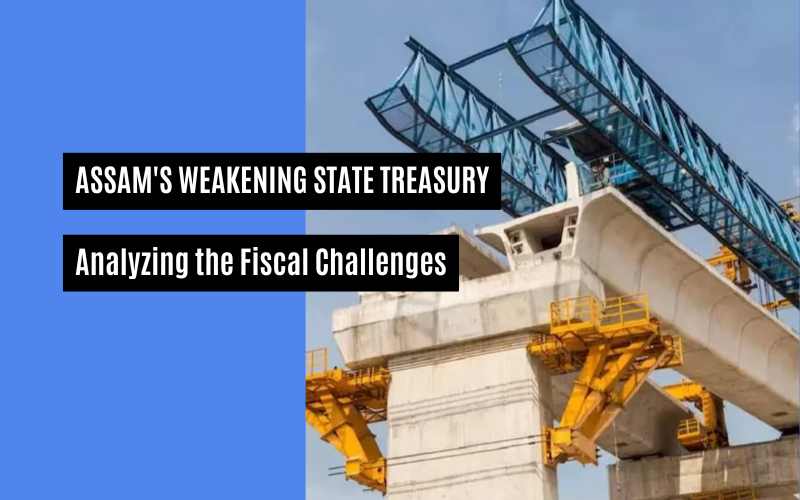
Assam's Weakening State Treasury: Analyzing the Fiscal Challenges
Assam's state treasury is facing significant strain, highlighting critical issues impacting the state's economic stability. The weakening of Assam's fiscal position is a multifaceted problem involving rising expenditures, limited revenue growth, debt servicing challenges, and extensive subsidies. This article delves into the technical aspects of these issues and proposes strategies for fiscal stabilization.
Rising Expenditures
Current Expenditure Trends: Assam's fiscal deficit has been widening due to increased current expenditures. For the fiscal year 2023-24, the state’s total expenditure is projected to grow by approximately 12% compared to the previous fiscal year. This surge is driven by:
Social Welfare Programs: Higher allocations for subsidies, pensions, and health care.
Infrastructure Development: Investments in roads, bridges, and educational institutions.
Impact Analysis: The rising expenditure is leading to a growing fiscal deficit, which has implications for the state's budgetary balance and overall economic stability. As per the State Budget Document, the fiscal deficit as a percentage of Gross State Domestic Product (GSDP) is projected to reach 3.5% in FY 2023-24, which exceeds the recommended limit of 3%.
Limited Revenue Growth
Revenue Sources and Trends: Assam’s revenue streams primarily include:
- State Goods and Services Tax (SGST): Accounting for about 40% of total revenue.
- Central Transfers and Grants: Constituting around 30% of the revenue.
- State Taxes and Duties: Including excise duty and property tax.
Revenue Constraints:
Tax Collection Efficiency: The efficiency of tax collection has been hampered by outdated systems and administrative inefficiencies.
Economic Slowdown: Lower economic growth rates have led to subdued revenue from indirect taxes and reduced business activity.
Revenue Analysis: Revenue growth has averaged 8% annually over the past five years, which is insufficient to match the expenditure growth rate. The revenue-to-expenditure ratio has been deteriorating, leading to increased reliance on debt.
Debt Servicing
Total Outstanding Debt: As of March 2024, Assam’s total outstanding debt stands at approximately ₹75,000 crore, representing about 20% of GSDP.
Debt Servicing Costs: Interest payments constitute around 15% of the state’s total expenditure.
High debt servicing costs limit fiscal flexibility and reduce the available budget for development programs. The state’s debt service coverage ratio (DSCR) is projected to fall below 1.5 in FY 2023-24, indicating increased difficulty in meeting debt obligations.
Subsidies and Financial Commitments
Subsidy Expenditure:
- Energy Subsidies: Significant subsidies for electricity and fuel.
- Agricultural Support: Subsidies for fertilizers and crop insurance.
Financial Impact: Subsidy expenditures consume a substantial portion of the budget, which could otherwise be allocated to capital investment and growth-promoting activities. The share of subsidies in total expenditure has increased by 5% over the past three years.
Adamant growth through investment
Despite this, Himanta Biswa Sarma’s tenure as Chief Minister of Assam has seen significant investments across various sectors. However, there have been concerns regarding the efficiency and necessity of some of these investments.
As of the latest fiscal report, the state government has allocated approximately ₹15,000 crore for infrastructure projects, including road construction, bridges, and public buildings. Initial assessments indicate that around ₹8,000 crore has already been spent, with a substantial portion directed towards high-profile projects.
Disclaimer: The opinions expressed in this article are those of the author's. They do not purport to reflect the opinions or views of The Critical Script or its editor.

Newsletter!!!
Subscribe to our weekly Newsletter and stay tuned.

















Related Comments